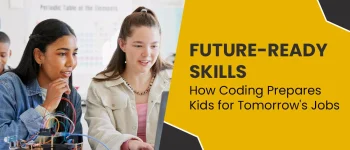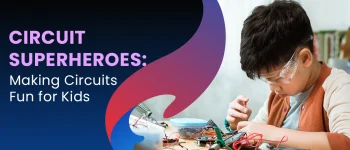
“A Kid’s Guide To 3D Printing” is a beginner’s guidebook that introduces children to the world of 3D printing. It explains the basics of 3D printing, how it works, and various applications in a simple and engaging manner. The book covers essential concepts like design software, materials, and the printing process. It also provides step-by-step instructions for creating fun and practical objects using 3D printers. With colorful illustrations and interactive activities, this guide aims to spark creativity and imagination in young readers while teaching them the fundamentals of this innovative technology..
3D printing is a captivating and educational activity that can be enjoyed by individuals of all ages, including children. However, it’s crucial to take into account the complexity and safety aspects of the 3D printing process when determining an appropriate age for a child to utilize a 3D printer.
For children below 8 years old, it may be more suitable to use a 3D printing pen or other simple crafting tools to create basic 3D shapes. As children grow older and develop more refined motor skills, they may be capable of using a 3D printer under adult supervision.
In this article, we will address some burning questions that often arise in the minds of children regarding 3D printing and its processes. We will also provide you with a basic understanding of this field and the benefits it offers.
3D printing is the process of fabricating a physical object from a digital model. It entails using a 3D printer, which is a machine that prints successive layers of material to construct an object. To create an object using this technology, you need to first design a digital model of the object using computer-aided design (CAD) software. The digital model is then converted into a format that the 3D printer can understand and use to build the object layer by layer.
This innovative technique can be employed to produce a wide range of objects, from simple shapes to complex structures with intricate details. Younger children may enjoy creating basic shapes or characters, while older children can take on more complex projects, such as designing and printing their own toys or gadgets.
A diverse array of materials can be utilized in 3D printing, including plastics, metals, ceramics, and even living cells. Common materials used in this process include plastics like PLA, ABS, and PET, which are relatively inexpensive and easy to work with. Metals, such as steel, aluminum, titanium, and copper, can also be used to create complex and high-strength parts. Ceramic materials offer a high level of detail and a smooth surface finish. Additionally, 3D printing with living cells, known as bioprinting, has the potential to revolutionize the field of medicine by enabling the creation of replacement tissues and organs.
Several techniques and processes are employed in 3D printing, such as Fused Deposition Modeling (FDM), Stereolithography (SLA), Selective Laser Sintering (SLS), Digital Light Processing (DLP), and Continuous Liquid Interface Production (CLIP). The choice of technique depends on factors such as the material being used, the complexity of the object, and the capabilities of the 3D printer.
Learning 3D printing can be highly beneficial for children as it allows them to explore their creativity, develop problem-solving skills, and introduces them to cutting-edge technologies. It encourages imagination, fosters critical thinking, and provides practical hands-on experience in designing and making objects. Additionally, 3D printing can enhance learning in various subjects, making abstract concepts more tangible and easier to grasp. It also promotes teamwork and collaboration as children can work together on 3D printing projects.
The popularity of 3D printing among kids has been steadily increasing as it offers an exciting and engaging way for them to express their ideas and bring their designs to life. Numerous schools, libraries, and educational institutions have incorporated 3D printers into their curriculum, providing students with an opportunity to explore this technology. Furthermore, there are specially designed 3D printers for kids and beginners that are user-friendly and easily accessible.
At Moonpreneur, we emphasize a few important factors when introducing children to 3D printing. Firstly, the age of the child should be taken into consideration, as working with small parts and technology may not be suitable for children below 8 years old. Additionally, safety is paramount, and adult supervision is necessary to ensure that children understand the potential hazards associated with 3D printers. Finally, having access to appropriate learning resources is crucial, which is why our online program, taught by industry experts, helps kids learn about 3D printing and CAD software.
Moonpreneur understands the evolving needs and demands of the rapidly changing technological world for our children. That’s why we have created a holistic online Product Design course that enables kids to master the art of 3D printing and PCB designing. Enroll your child today and let them embark on an exciting journey of creativity, problem-solving, and exploration through 3D printing!
Source: moonpreneur.com
Hashtags: #Kids #Guide #Printing







 24hMinecraft is a Minecraft community created by fans, where users can share and download their favorite shader packs, mods, maps, texture packs, or expand their knowledge with our guides.
24hMinecraft is a Minecraft community created by fans, where users can share and download their favorite shader packs, mods, maps, texture packs, or expand their knowledge with our guides.
Leave a Reply